|
|
| |
| Padma Perfumery Works Replenish your senses! |
| Rose Incense |
White Musk Incense |
Al Oudh Incense |
Sheik Al Arab Blue |
Jasmine Incense |
|
|
|
|
|
 |
 |
 |
 |
 |
|
|
|
Musk
Musk has been an prominent incense material along with Frankincense, Myrrh and Amber. The redolent, penetrating essence of  musk reflects human hormonal elements and it has always been considered to be a sophisticated masculine fragrance since ages. Musk has a rich, woody, sensuous fragrance that rejuvenates the psyche, body and spirit and is known to uplift ones temperament and energy level. It is the most powerful and lasting scent found in nature and is used only in small quantities as it overwhelms the senses when used undiluted. musk reflects human hormonal elements and it has always been considered to be a sophisticated masculine fragrance since ages. Musk has a rich, woody, sensuous fragrance that rejuvenates the psyche, body and spirit and is known to uplift ones temperament and energy level. It is the most powerful and lasting scent found in nature and is used only in small quantities as it overwhelms the senses when used undiluted.
What is Musk?
Originally, Musk comes from the musk deer, which are artiodactyls of the genus Moschus, the only genus of family Moschidae. This greasy, aromatic secretion is obtained from a glandular sac beneath the skin of the abdomen of the adult, male musk deer. The deer has to be killed in order to obtain this gland which is also known as "musk pod". The reddish-brown paste inside the musk pod is then taken out and dried. Upon drying, the paste turns into a black granular material called musk grain which is then tinctured with alcohol. The aroma of the tincture gives a dulcit odor only after it is considerably diluted. This tincture is further distilled and processed to obtain the essential musk oil. The characteristic fragrance of musk is because of an organic compound called muscone.
There are four sub-specie of the musk deer, namely:
- Moschus chrysogaster (Himalayan Musk Deer)
- Moschus moschiferus (Siberian Musk Deer)
- Moschus berezovskii (Dwarf Musk Deer)
- Moschus fuscus (Black Musk Deer)
Scientific Classification of the Musk deer
- Kingdom : Animalia
- Phylum : Chordata
- Class : Mammalia
- Order : Artiodactyla
- Suborder : Ruminantia
- Infraorder : Pecora
- Family : Moschidae
- Genus : Moschus
Although the musk deer yields the best musk, this aromatic product is also obtained from different other animals like the muskrat, musk duck, muskox, musk shrew, musk beetle, African Civet, the musk turtle, the alligator of Central America, and from several other animals.

Plant Sources
- The plant sources include
- Angelica archangelica,
- Abelmoschus moschatusmusk flower (Mimulus moschatus)
- Muskwood (Olearia argophylla)
- Abelmoschus moschatus (musk seeds).
Synthetic Musk
Since obtaining natural musk involves killing these endangered species of deers, almost all commercially available musk products are synthetic. Called "white musk", these products are divided into three classes :
- Aromatic nitro musks,
- Polycyclic musk compounds
- Macrocyclic musk compounds.
|
|
|




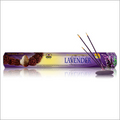
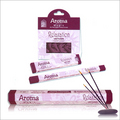
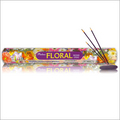
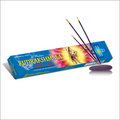
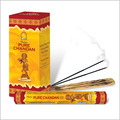
 musk reflects human hormonal elements and it has always been considered to be a sophisticated masculine fragrance since ages. Musk has a rich, woody, sensuous fragrance that rejuvenates the psyche, body and spirit and is known to uplift ones temperament and energy level. It is the most powerful and lasting scent found in nature and is used only in small quantities as it overwhelms the senses when used undiluted.
musk reflects human hormonal elements and it has always been considered to be a sophisticated masculine fragrance since ages. Musk has a rich, woody, sensuous fragrance that rejuvenates the psyche, body and spirit and is known to uplift ones temperament and energy level. It is the most powerful and lasting scent found in nature and is used only in small quantities as it overwhelms the senses when used undiluted.
